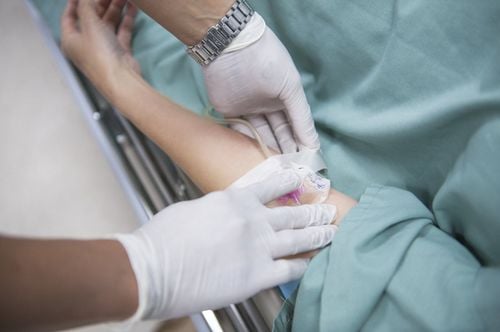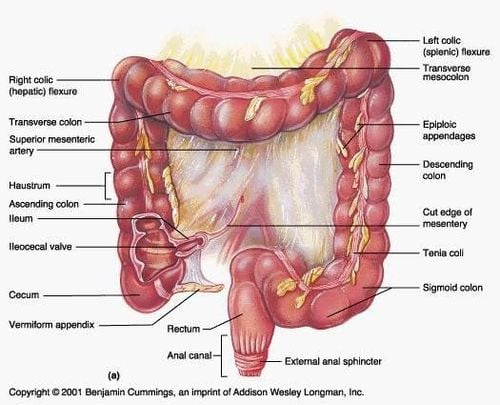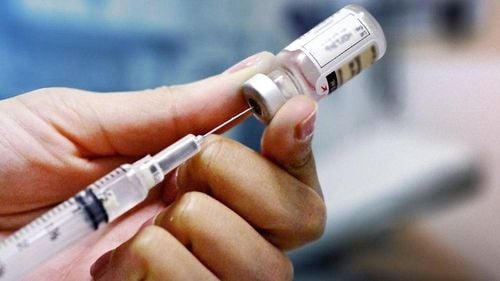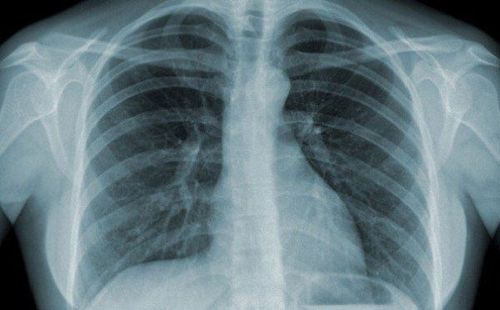This is an automatically translated article.
Article written by Specialist Doctor I Nguyen Dinh Hung - Department of Diagnostic Imaging - Vinmec Hai Phong International General Hospital
Contrast used in CT Scan is mainly water-soluble contrast and the route used for the patient is the intravascular route. Unlike contrast agents used in routine radiology, they can be used insoluble in water, mainly by oral administration or by injection into natural cavities.
1. What is contrast agent?
Contrast containing Iodine is an iodized polymer in nature. The effect of the contrast agent depends on the amount of iodine attached to the polymer. Contrast containing Iodine is the most widely used contrast agent today (over 50% according to statistics in the US in 2006). Iodine-containing contrast agents are divided into two groups: fat-soluble iodinated contrast agents and water-soluble iodinated contrast agents.
Contrast used in CT Scan is mainly water-soluble contrast and the route used for the patient is the intravascular route (intravenously at high speed). Unlike contrast agents used in routine radiology, they can be used insoluble in water, mainly by mouth or by enema through natural cavities (oral in gastro-oesophageal x-ray, bronchogram). colostomy, fistulography (water-soluble contrast) Because it is used directly through the intravascular route, we need to understand the following information clearly to order or perform diagnostic examinations by CT Scan that can be used. contrast agent
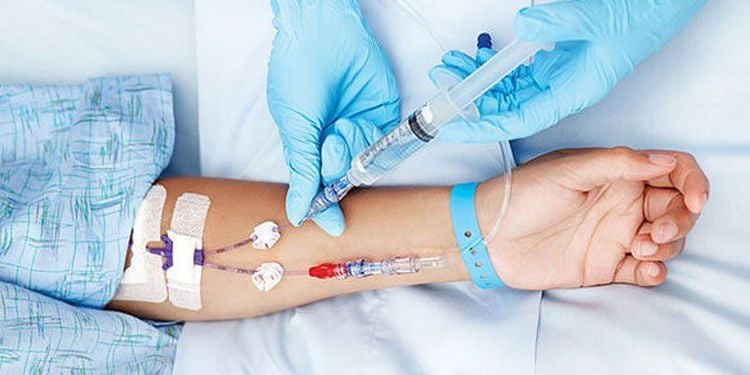
Thuốc cản quang sử dụng trong chụp CT Scan dùng tiêm tĩnh mạch với tốc độ cao
2. What is a contrast-enhanced CT scan?
CT scan, also known as computerized tomography, is a technique that uses X-rays to scan an area of the body in a cross-section combined with computer processing to get an image. dimension or 3D of the part to be photographed.
Contrast CT scan is applied in some cases, it is necessary to examine the lesions and blood vessels more carefully, the medical professional will inject a contrast agent into the body. Iodine-containing contrast agents will cause attenuated structures or lesions to appear bright white on CT scans, which will help distinguish the abnormal area from other structures around it.
3. What types of contrast agents are used in CT scans?
First generations are ionic contrast agents and have high plasma osmolality (1400 to 1800 mosmol/kg) These are now no longer used because of their more nephrotoxicity than later generations. this.
Currently used contrast agents have higher osmolality than plasma (500 to 850 mosmol/kg) and are nonionic (except Hexabrix). Only Iso-osmolal (Iodixanol) is nonionic and has the lowest osmolality (290 mosmol/kg).
Ultravist is a non-ionic type, the osmolality is higher than that of plasma (607 - 774 mosmol/kg). With Ultravist can ensure the purpose of survey when taking CT scan.
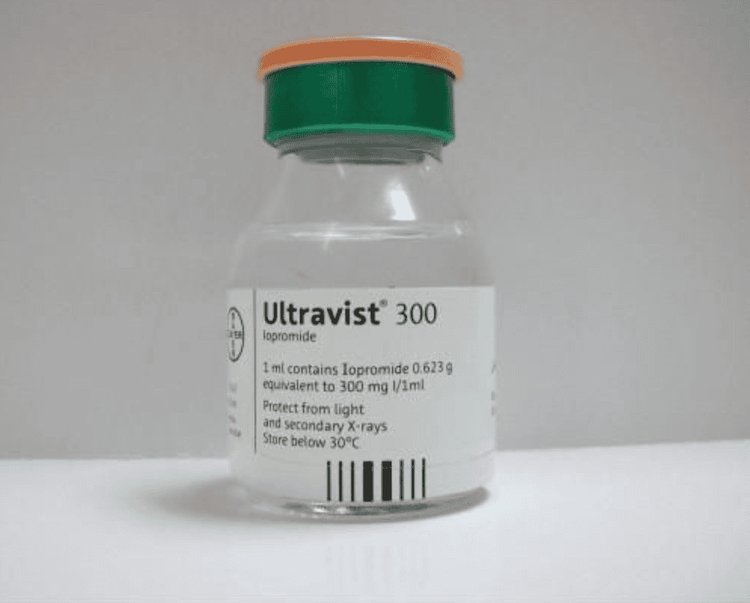
Thuốc cản quang Ultravist được sử dụng trong chụp CT scan
4. Risks of CT Scan with Contrast
When injecting contrast, CT scan may have some risks, requiring prompt treatment if it occurs in the patient.
Anaphylaxis: After injection, within 1 hour appear symptoms of flushing, itching, acute urticaria, rash, angioedema, bronchospasm causing difficulty breathing, stridor, laryngeal edema, retraction thoracic cavity, hypotension, shock, loss of consciousness. Anaphylaxis is not usually related to dose and rate of injection. It can occur even with exposure to a small amount of contrast medium. And manifests on many levels. Contrast-induced renal failure: The occurrence of acute renal failure or an increase in the degree of renal failure after contrast administration (excluding other causes affecting renal function): an increase of 25% or > 0, 5 mg/dl (44.2 mmol/l) of baseline creatinine. Usually occurring within 24-48 hours of contrast media administration, creatinine elevation peaks after 5-7 days and in most cases returns to normal after 7-10 days. Acute Hyperthyroidism: Is a severe condition in subjects who are suffering from pathological hyperthyroidism. Therefore, it is necessary for patients to inform their doctor about their medical history, especially thyroid disease. Other hazards: Harm to the unborn baby. On pregnant women, it is necessary to carefully consider and choose other methods such as ultrasound, X-ray usually with protective clothing. Some cases have allergic-like reactions such as mild itching, but these reactions quickly disappear.

Một số trường hợp có thể xuất hiện mày đay sau khi tiêm thuốc cản quang
5. Notes after performing a contrast-enhanced CT scan
For patients undergoing CT scan with added contrast, they have not yet returned to normal eating or activities, but need to be monitored for about 30 minutes. This monitoring is to make sure that you are not facing any unusual problems from taking the medicine.
Within the next 24 hours you will be encouraged to drink more water than usual so that all the medicine is eliminated by the body. Contrast is indeed considered to be used in a reasonable dose, but if it is not excreted in time, it is very likely that your liver and kidneys will be overloaded, in the long run causing impaired function. power.
Especially if you have signs of severe vomiting or have a rash, high fever and difficulty breathing after a CT scan, you should immediately contact a specialist or go to the nearest medical facility for advice. monitoring and processing.
For detailed advice, please come directly to Vinmec health system or register online HERE.





